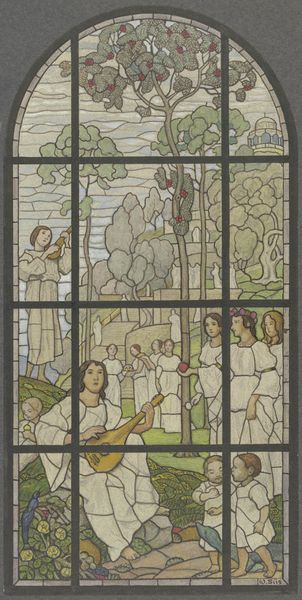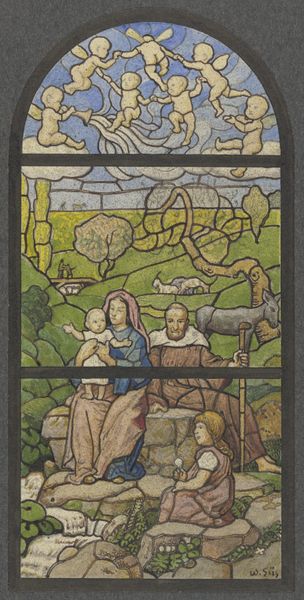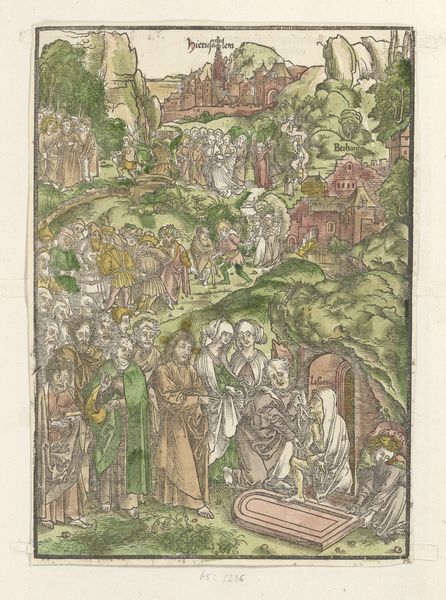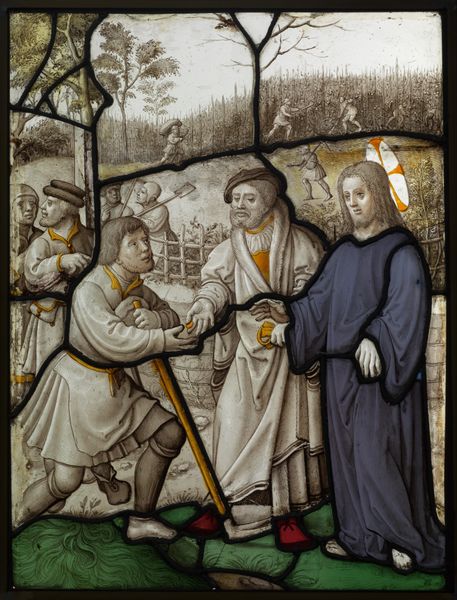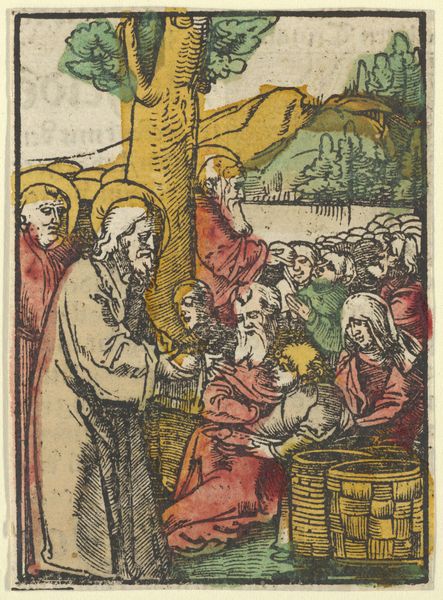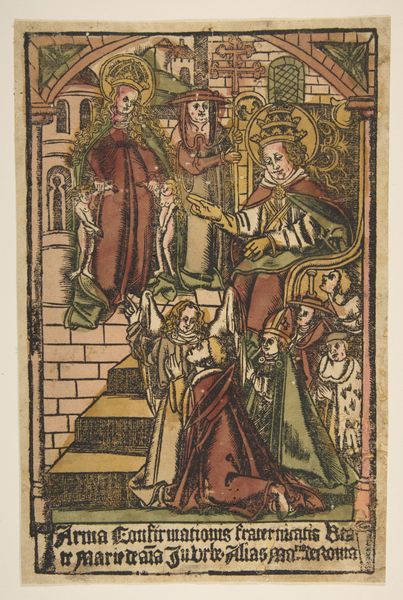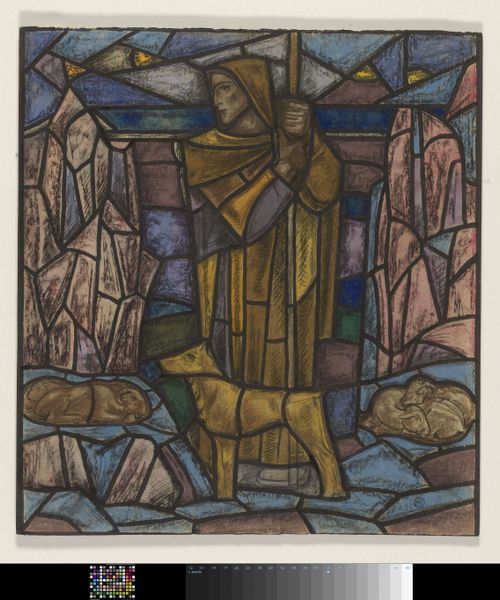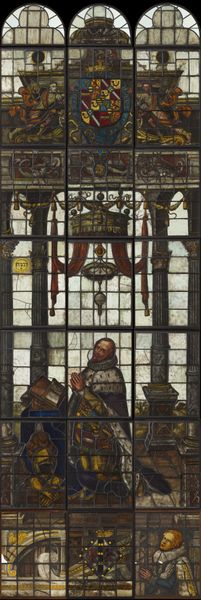
drawing, tempera, paper, ink
#
drawing
#
tempera
#
stain glass
#
figuration
#
paper
#
jesus-christ
#
ink
#
german
#
history-painting
#
stained glass
Copyright: Public Domain
Wilhelm Süs designed this stained-glass window, entitled 'Christ as Teacher,' sometime around the turn of the 20th century. Its display here at the Städel Museum reminds us that religious imagery has long played a public role in Germany. The mosaic-like effect of stained glass, the linear perspective drawing our eyes up towards the light, the gentle naturalism of the figures – all suggest the influence of the Arts and Crafts movement in Britain and Germany. Notice how the artist arranged the composition into two registers: in the upper scene, Christ teaches his followers, while below, he welcomes the children. How might this design have functioned in a specific architectural setting such as a church? What associations might a German audience have had with these scenes? Historians of art often turn to sources like period writings about art and architecture, as well as archival records from museums and churches, to better understand the social and institutional contexts that give art its meaning.
Comments
No comments
Be the first to comment and join the conversation on the ultimate creative platform.
